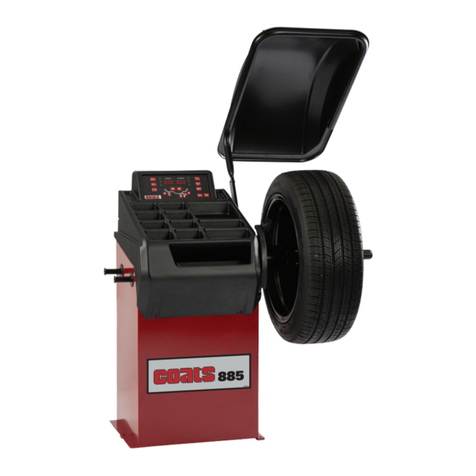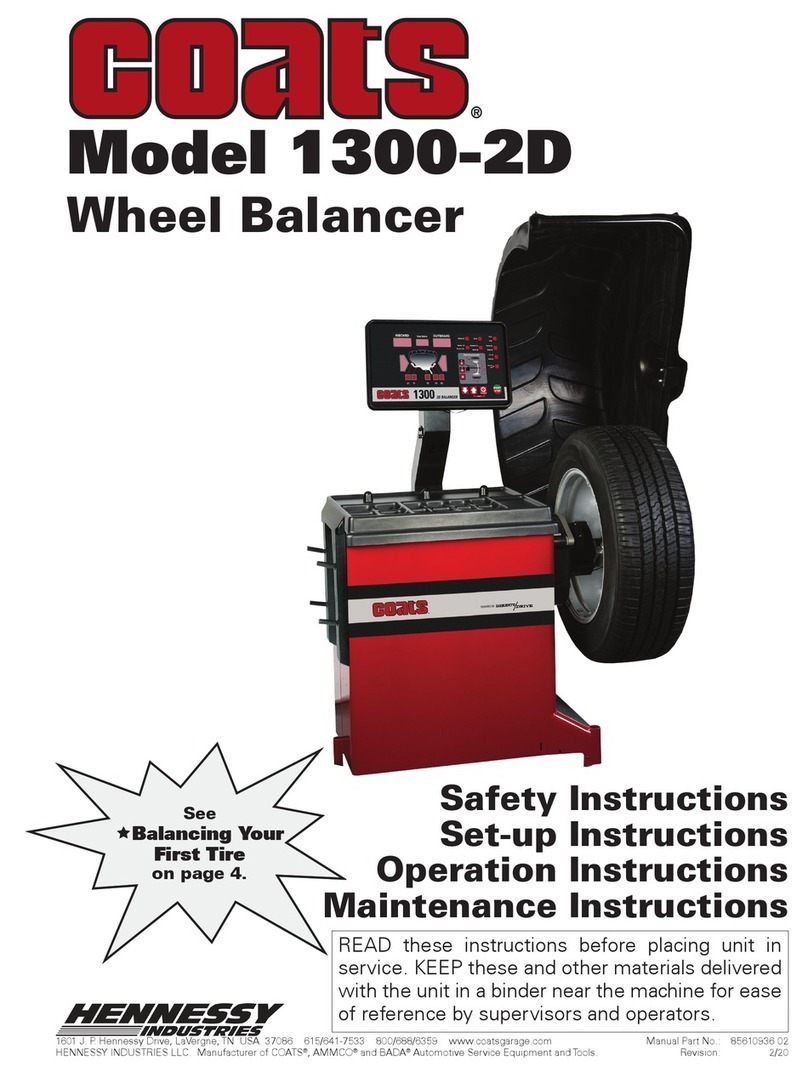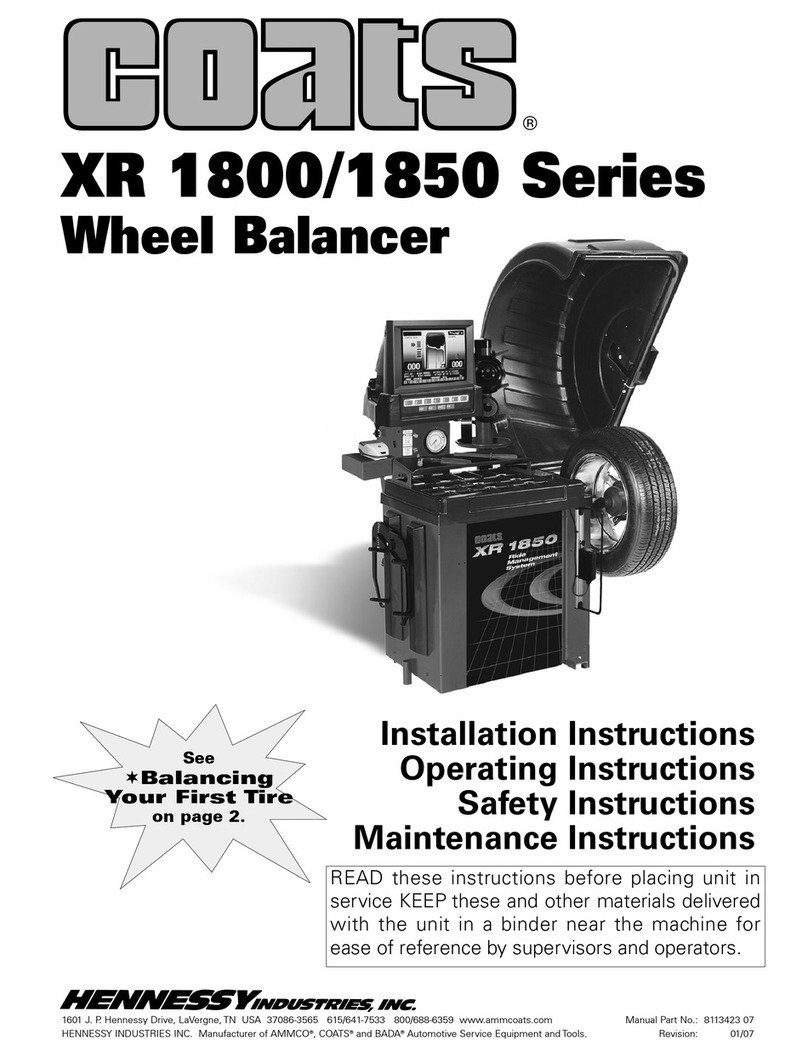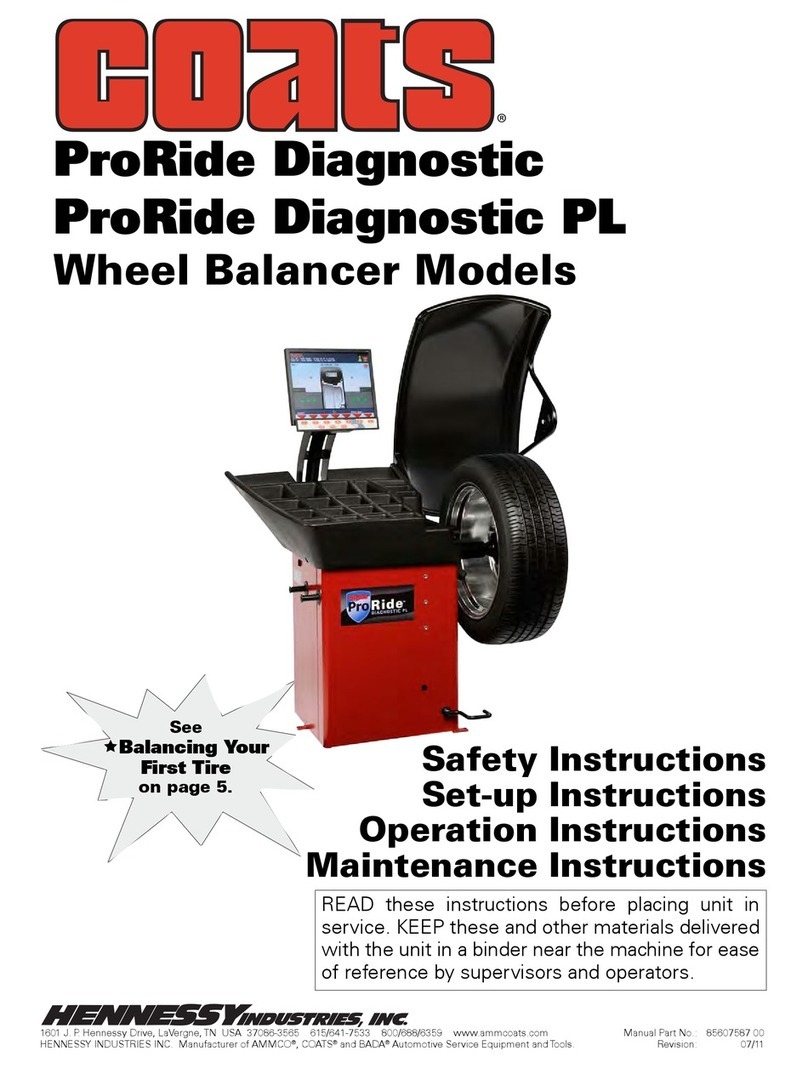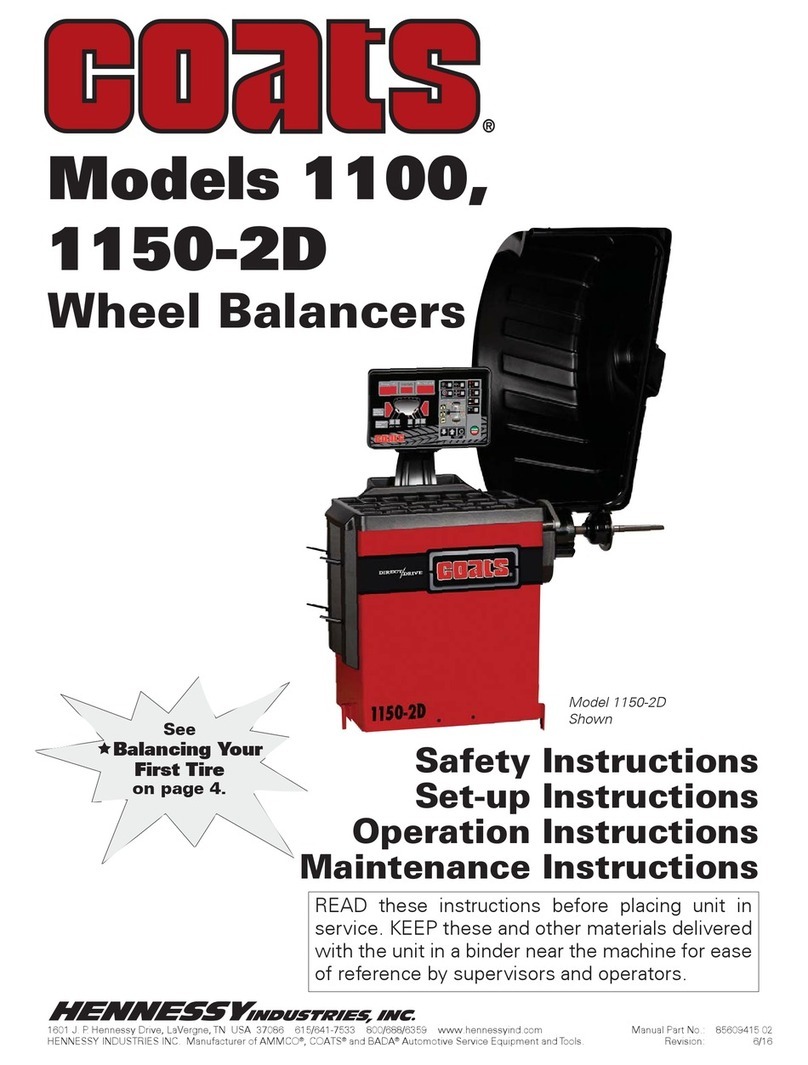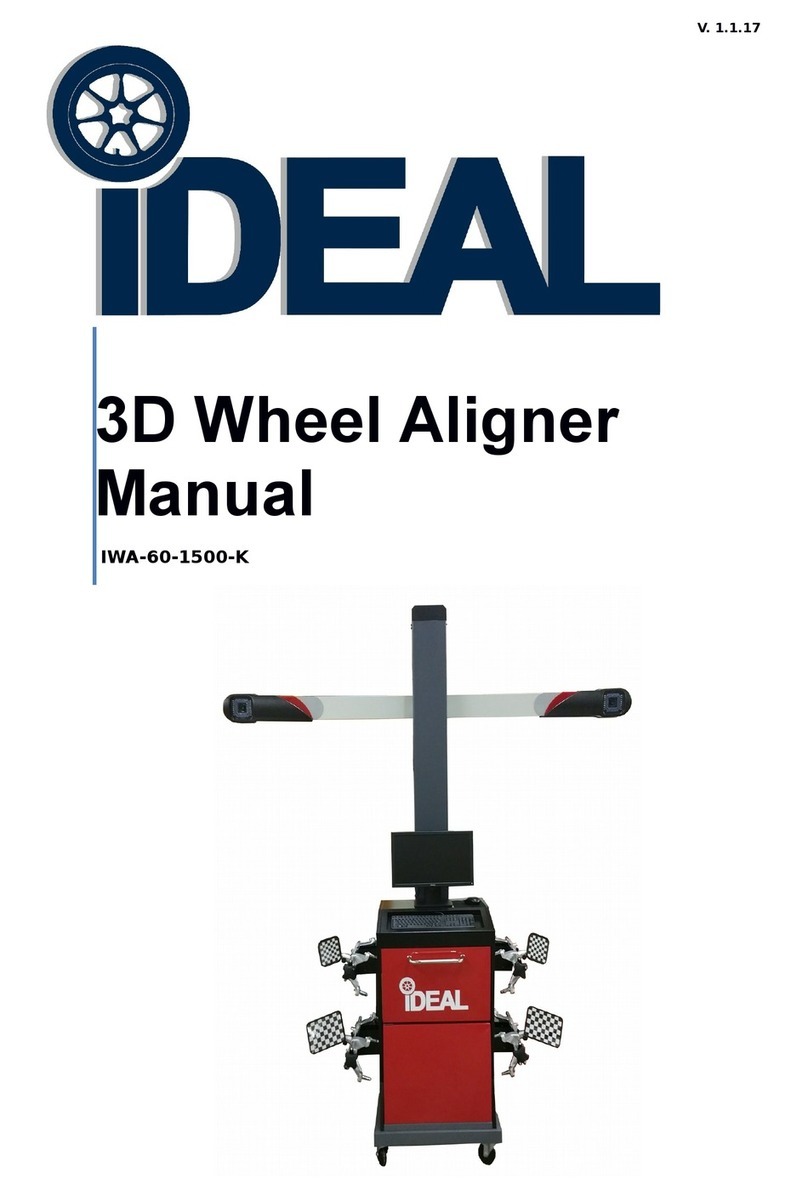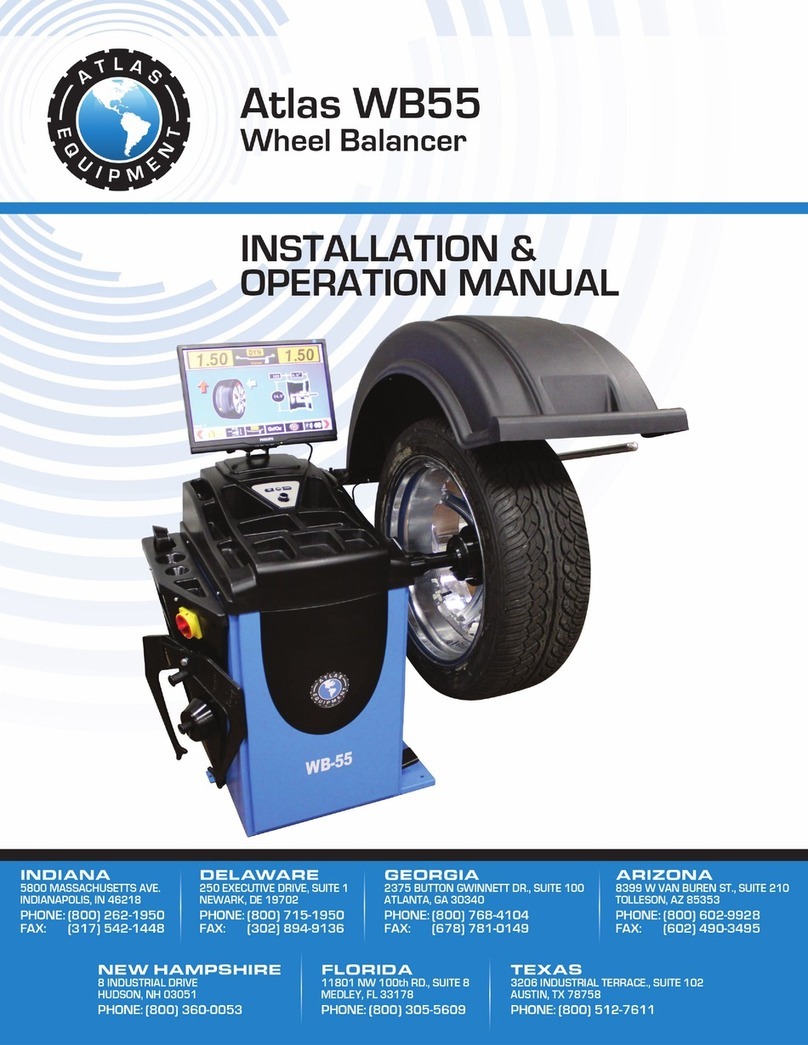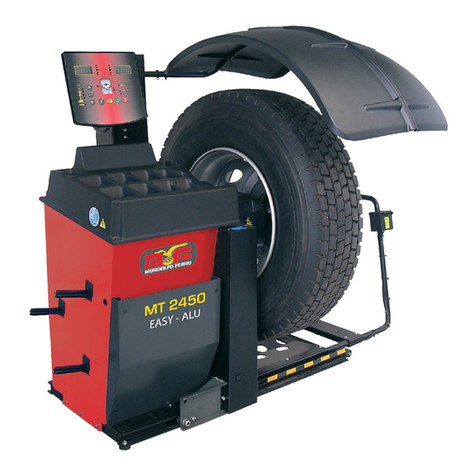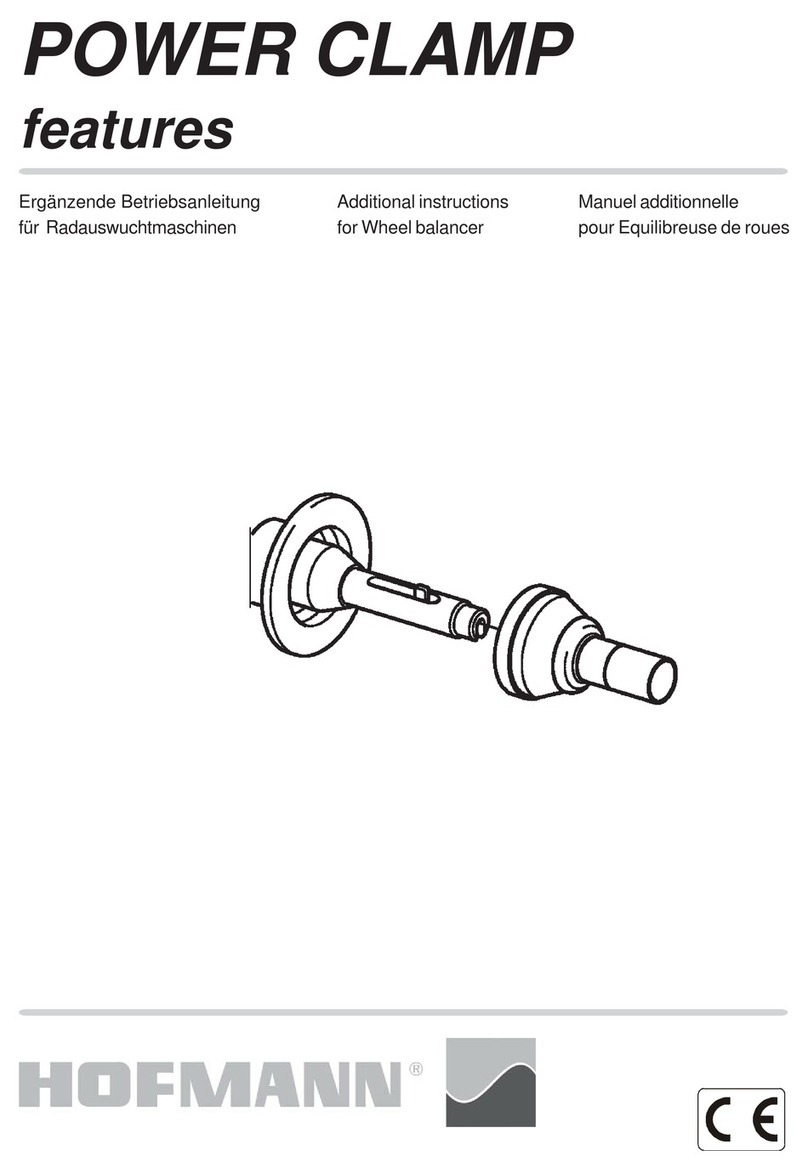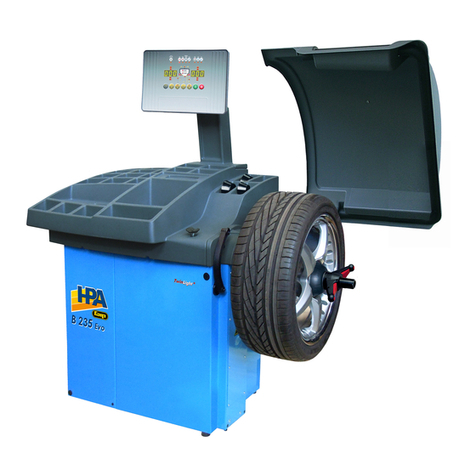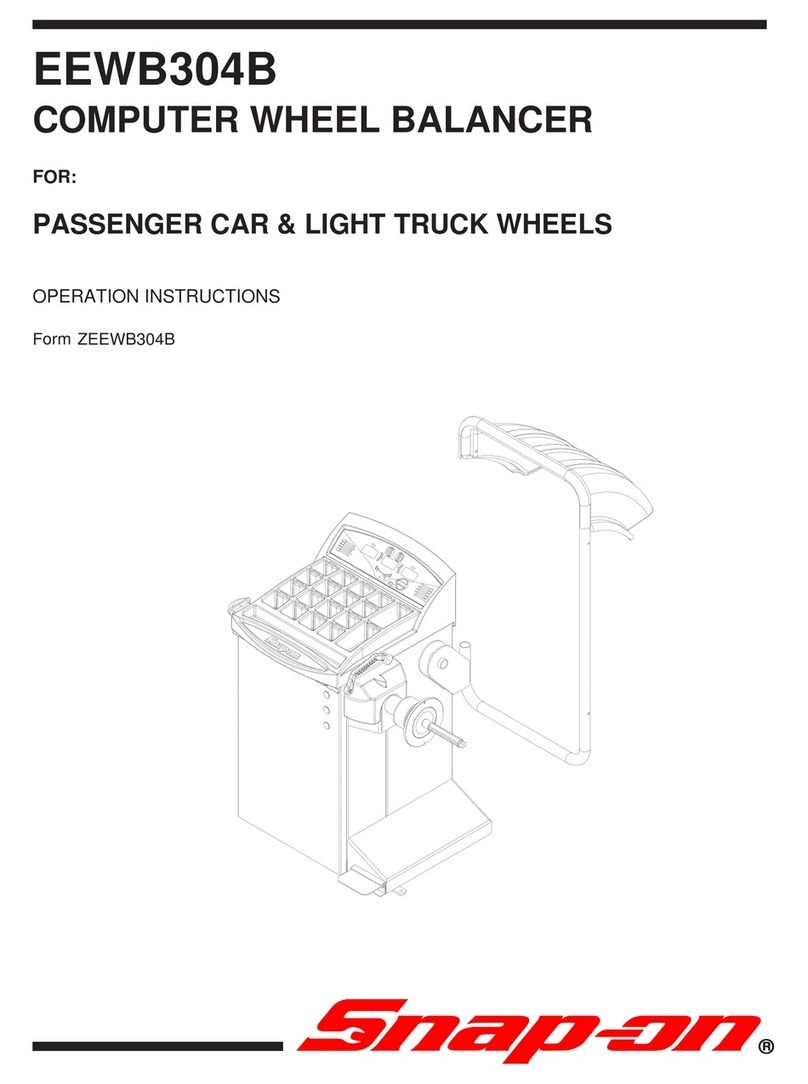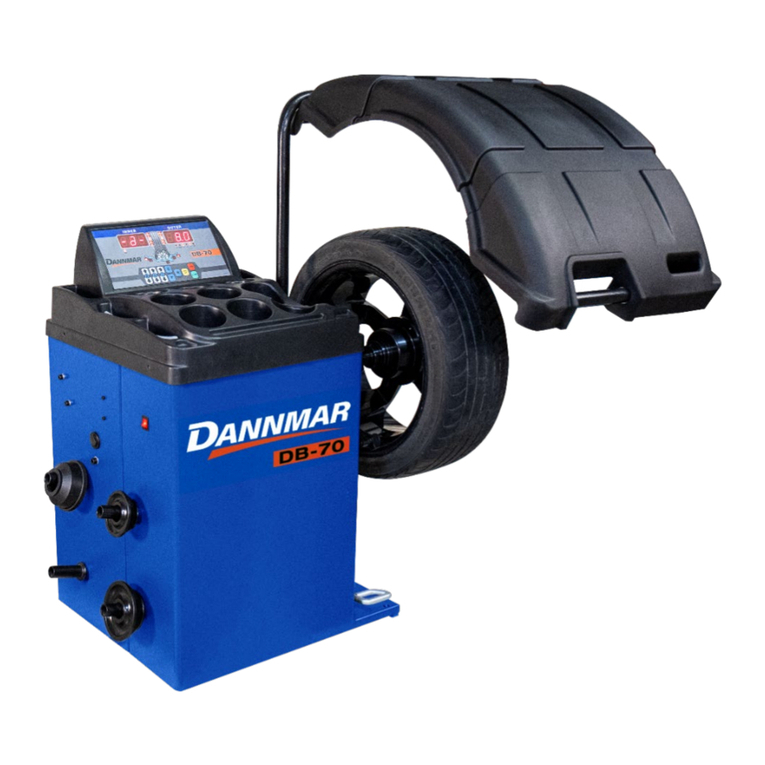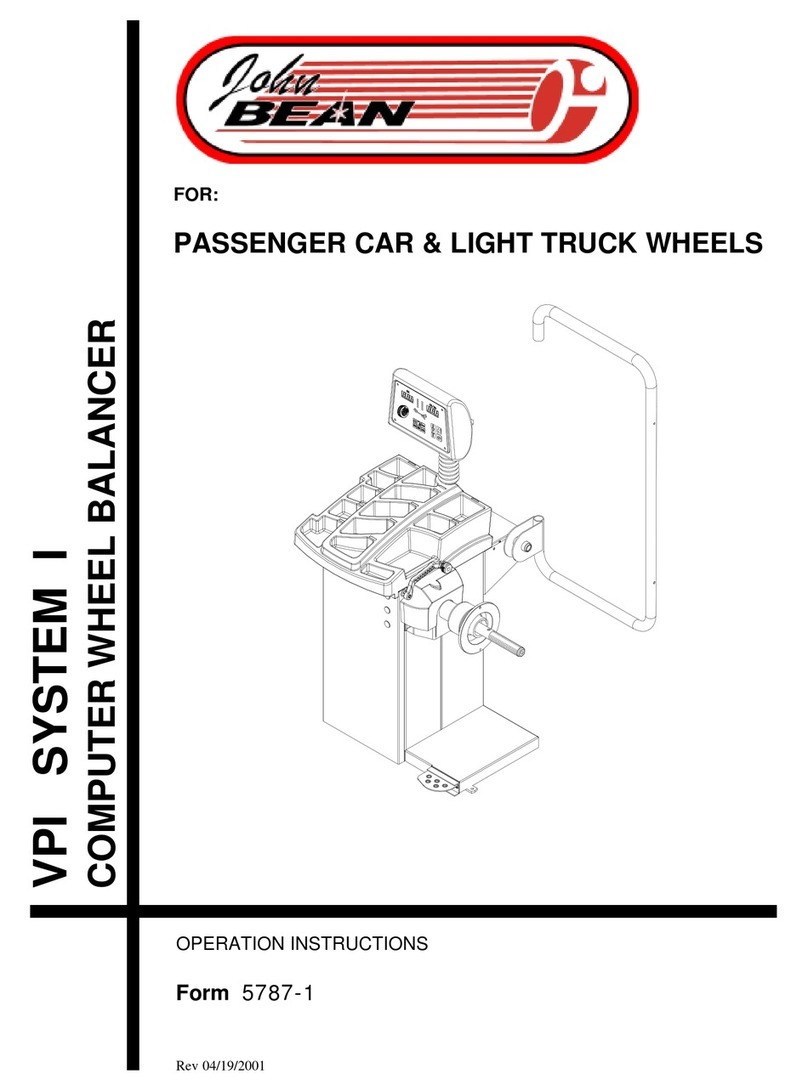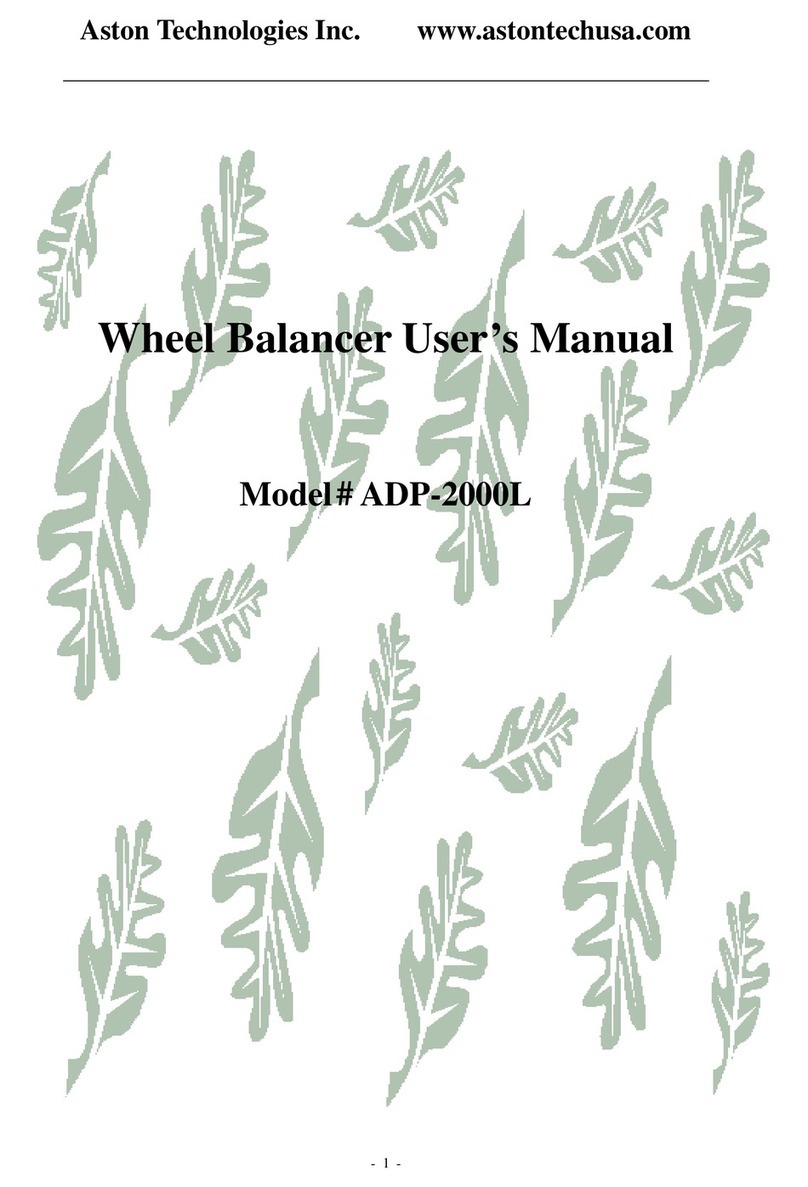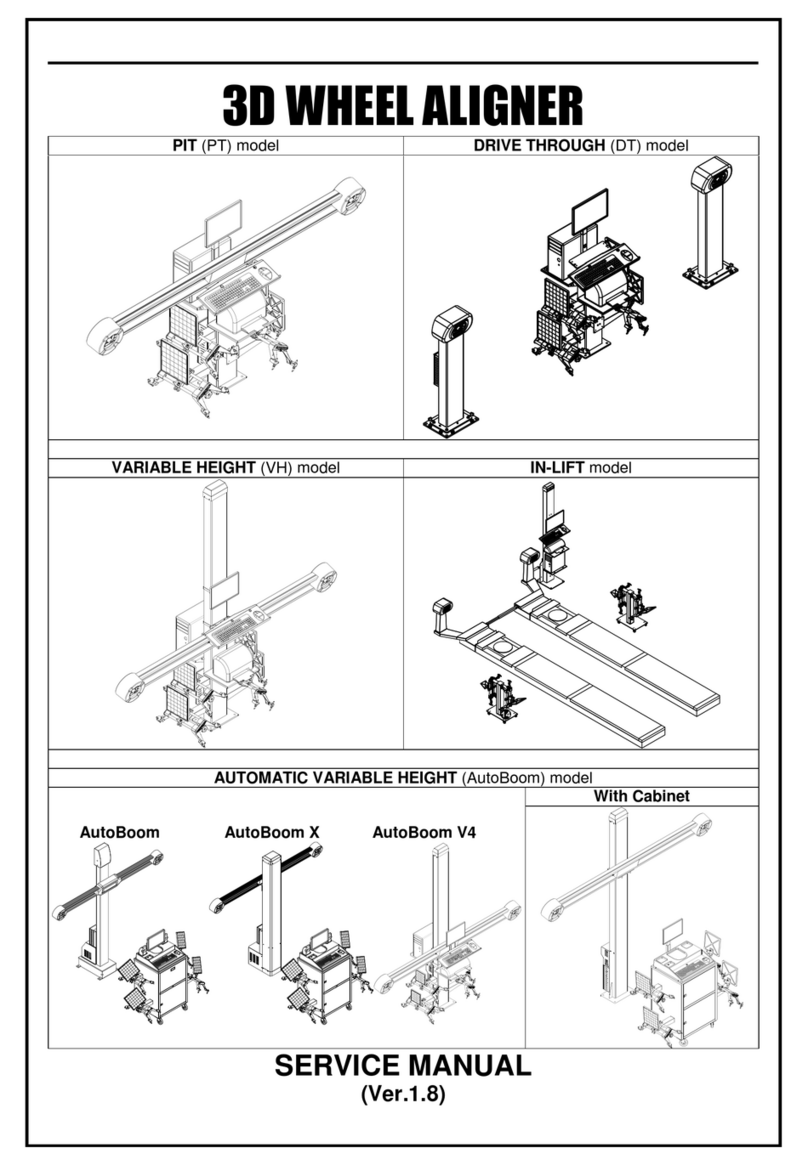Entering Wheel Measurements
Wheel measurement data is entered using the wheel
measurement keys on the control panel. The top key
is for wheel offset (the distance between the edge of
the wheel and the balancer, Figure 7). The center key
is for rim width (Figure 8). The bottom key is for rim
diameter (this measurement is found on the sidewall
of the tire).
1. Pull the offset handle out from the upper right
side of the balancer and over to the wheel.
Rotate the handle until the end touches the
second surface of the rim flange.
Figure 7 - Measuring Wheel Offset
2. Read the last legible number on the offset handle
and enter this number by pressing the offset key
then the appropriate numbers on the keypad (for
example, press 6 then 5 to enter a measurement
of 6.5 inches).
3. Press the diameter key and use the keypad to
enter the wheel diameter shown on the tire
sidewall.
4. Fit the calipers over the top of the wheel. Touch
the ends of the caliper arms to the outside of the
rim. On standard wheels, the calipers should
touch the vertical rim surface (not the rolled rim
flange). On mag wheels, the calipers should
touch the flat rim edge.
Figure 8 - Measuring Wheel Width with Calipers
5. Read the measurement on the calipers and enter
it by pressing the width key and the appropriate
numbers on the keypad (for example, press 8
then 5 to enter a wheel width of 8.5 inches)
Balance the Wheel
REMEMBER: This balancer may or may not have a
hood to cover the spinning wheel. Non-UL certified
balancers come without a hood. A non-hooded
balancer can be cycled by pressing the start button.
Exercise caution when using the balancer. Wear eye
protection. Keep bystanders away from operating
balancer. Do not attempt to stop the wheel manually -
wait for the balancer to brake the wheel to a complete
stop before coming in contact with the wheel.
1. Remove any weights from the wheel. Lower
hood, press START. The balancer will spin and
stop automatically.
To use the fine balance mode (0.01-ounce
increments) press and hold SHIFT and press
ROUND OFF.
2. Wait for the wheel to stop completely.
As the wheel brakes to a stop, weight
measurements will appear in the weight displays on
the control panel. The left display is for the left plane
of the wheel, and the right is for the right plane.
Next to each weight display is the weight
positioning lights. The two LEDs in the middle of
the positioning lights will blink alternately to
indicate proper weight position. The LEDs above
and below will indicate which way to rotate the
wheel to reach the weight position.
Figure 9 - Weight Positioning
3. Raise the hood and rotate the wheel until the left
weight position LEDs blink. Attach the specified
weight size at top dead center.
4. Rotate the wheel until the right weight position
LEDs blink. Attach the specified weight size at
top dead center.
NOTE: The more accurate you are in selecting
the exact weight and position; the more often
you will balance in one spin.
5. Lower the hood, press start, and respin the
wheel. Your weight readings should now be 0.00
(in normal mode).
6. Raise the hood and remove the wheel. If you are
balancing another wheel identical to this first one,
4• COATS 700 Balancer
Rim
Rim
Tire
Tire
Calipers
Calipers
Mag Wheel
Standard Wheel
Touch Second
Surface of Rim
Offset Measurement
Last Legible Number
Offset
Width
Left Weight
Weight Position LEDs
Weight Displays
Right
Top Dead Center


